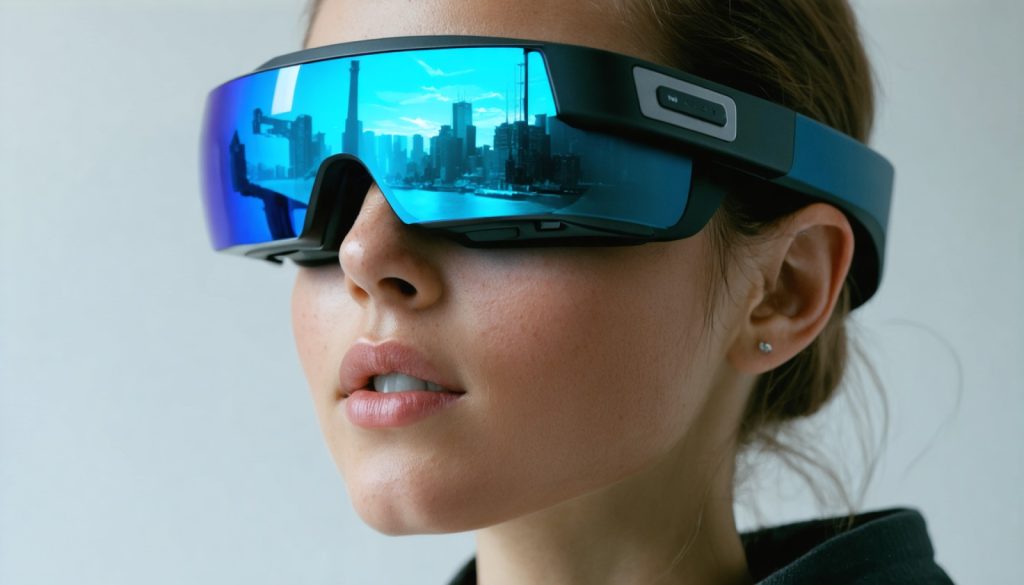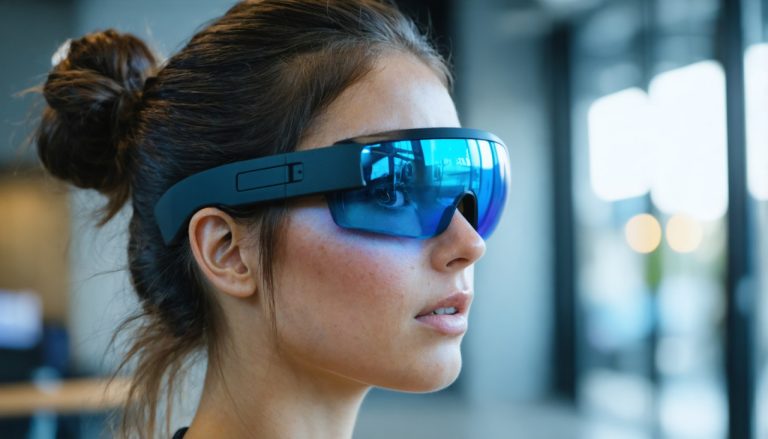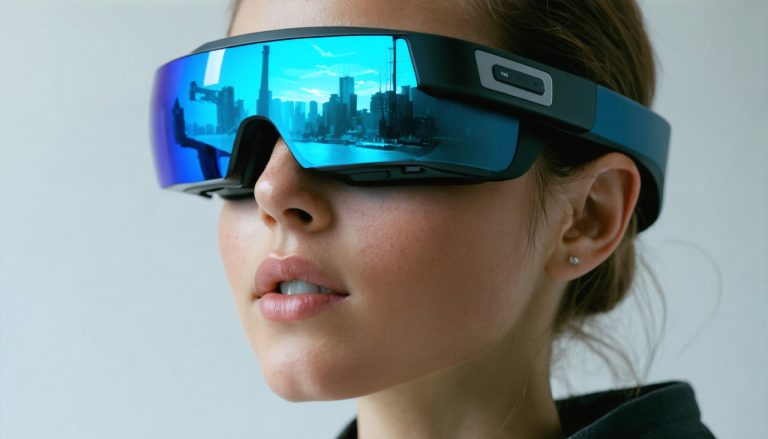
- ENGO 2 AR glasses integrate augmented reality for fitness, displaying real-time metrics like pace and heart rate.
- The glasses collaborate with Garmin Fenix 8, suggesting a shift away from traditional fitness watches.
- Weighing only 36 grams, the glasses are light but struggle with slipping and limited field of view.
- Cyclists benefit from hands-free data access, reducing the need for risky glances at bike-mounted devices.
- Major tech firms like Meta, Google, and Samsung are exploring greater integration of AR in wellness and fitness.
- The future might include seamless wearable technology enhancing fitness, though current limitations persist.
Picture yourself pounding the pavement on a crisp morning run, your eyes set on the horizon. Now add a dash of futuristic technology—a pair of augmented reality glasses breathing new life into your workout. The once distant dream of hands-free, real-time data tracking is inching ever closer, promising a revolution in personal fitness like no other.
Strap on a sleek pair of ENGO 2 AR glasses and immediately feel the tug between today’s tech limitations and tomorrow’s possibilities. The moment you set off, your pace, heart rate, and power metrics silently hover at the edge of your vision. It’s a dizzying blend of the physical and digital worlds. Importantly, this vivid holographic data flow is streamed from a high-end Garmin Fenix 8, making you wonder if you’ll still rely on the wrist-bound constant in years to come.
The ENGO glasses hint at a new era, yet their current form still feels like a compromise. At a feather-light 36 grams, they shed the weight of their clunkier predecessors, but they force you to confront a few familiar nemeses—the dreaded slipping frames and constrained field of view. Imagine missiles of critical data obscured each time you battle gravity’s persistent pull on your nose. ENGO’s innovation sees promising battery life and convenient motion sensors, yet a slight disconnect between intention and execution endures.
If you’re strapping in for a rugged mountain climb or cycling alongside turbulent traffic, the practical allure of such tech is undeniable. Cyclists, in particular, find solace in not having to sneak risky glances at bike-mounted devices—eyes trained steadily ahead, undistracted.
While ENGO’s focus remains narrowly pegged to fitness, there’s a subtle, broader revolution quietly fomenting. Giants like Meta, Google, and Samsung are tantalizingly close to merging the realms of wellness and augmented reality. Meta’s experimental strides hint at broader integrations, merging audio prompts with holistic health insights, while Google’s and Samsung’s featherlight tech blueprints signal exciting potential integrations.
Imagine conquering your weekend marathon with a flick of your fingers, effortlessly conjuring real-time updates on your heart’s rhythm or virtual mapping guidance keeping you on track. Such ambitions, still in speculative infancy, beckon a new sporty age, free of traditional device constraints.
So, the crucial question beckons: Are you on the brink, ready to embrace a future where wearables seamlessly support your journey toward health enlightenment? Or does the weight of today’s practical challenges still tip the balance, ensuring that conventional tools like fitness smartwatches stand undefeated, for now? As we bridge the gap between potential and pragmatism, the horizon gleams with promise—nudging us to ponder, prepare, and, eventually, see the possibilities right before our eyes.
Are Augmented Reality Glasses the Future of Fitness? Discover the Pros, Cons, and Future Trends
The Revolutionary Impact of Augmented Reality Glasses on Fitness
Augmented reality (AR) glasses are rapidly evolving, promising to transform the fitness industry with innovative features and real-time data integration. The ENGO 2 AR glasses represent a significant step in this evolution, delivering crucial workout information directly into the user’s line of sight. As fitness enthusiasts explore these technologies, several aspects warrant further discussion.
Key Features and Specifications
ENGO 2 AR glasses bring advanced functionality to athletes, enhancing their workouts with:
– Real-Time Data: Metrics like pace, heart rate, and power are displayed seamlessly as holographic overlays, linked with devices such as the Garmin Fenix 8.
– Lightweight Design: Weighing only 36 grams, these glasses offer a more comfortable fit over previous models.
– Motion Sensors: Integration of motion sensors for intuitive control during activity.
How-To: Optimize Your Workouts with AR Glasses
1. Sync with Compatible Devices: Ensure your AR glasses are compatible with your fitness tracker.
2. Adjust Settings: Customize the visible data to focus on metrics most important to your workouts.
3. Fit for Comfort: Properly adjust the nose piece and arms to prevent slipping during activity.
4. Safety First: Always remain aware of your surroundings, especially in dynamic environments.
Real-World Use Cases and Benefits
– Cycling: Cyclists benefit from hands-free access to performance metrics without taking their eyes off the road, enhancing safety and performance.
– Running: Runners receive instant feedback on their pace and distance, enabling real-time performance adjustments.
– Hiking: AR glasses can provide navigation support and performance data, aiding in challenging terrains.
Industry Trends and Market Forecasts
The AR wearables market continues to grow, driven by technological advances and increasing demand for seamless fitness solutions. Major tech players, including Meta and Google, are investing in AR technology, signaling future enhancements such as:
– Integration with AI for personalized workout experiences and health insights.
– Expanded applications in wellness, potentially revolutionizing holistic health monitoring.
Pros and Cons Overview
Pros:
– Hands-free data access.
– Enhanced awareness and engagement during workouts.
– Potential for integration with other health technologies.
Cons:
– Potential for discomfort due to slipping or limited field of view.
– Current models may rely heavily on specific companion devices.
– Some users might find data distractions if improperly managed.
Controversies and Limitations
While AR glasses promise to innovate, concerns remain:
– Privacy: Real-time data sharing raises potential privacy issues.
– Accuracy: The dependency on external devices may affect measurement precision.
– Durability: Frequent outdoor use necessitates durable materials to withstand different environmental conditions.
Recommended Actions and Quick Tips
– Trial Before Commitment: If possible, try out AR glasses during a workout to assess comfort and utility.
– Focus on Compatibility: Ensure all your fitness devices are compatible with AR glasses for optimal performance.
– Stay Informed: Follow trends in AR technology to make informed purchasing decisions as features evolve.
Conclusion: Are AR Glasses Worth the Investment?
Augmented reality glasses like the ENGO 2 are heralding a fitness era where digital and physical merge seamlessly, offering promising support for athletes. While challenges remain, the potential benefits are significant. For those eager to stay ahead of the curve, AR glasses offer a glimpse into the future of fitness innovation.
For more insights into fitness technology and wearables, visit Meta and Samsung.



